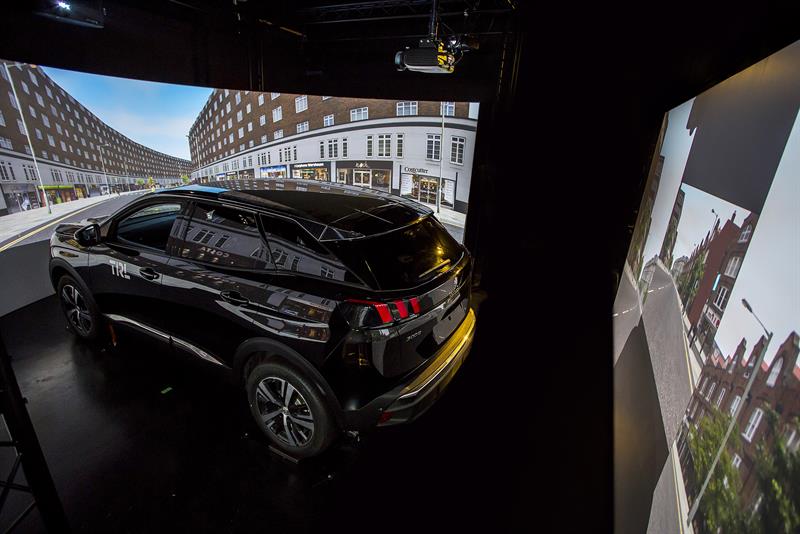The driving simulator suite consists of a full-size DigiCar, a portable version (MiniDigiSim) and a HGV driving simulator (DigiTruck).
DigiCar was built using a Peugeot 3008 SUV and creates a fully immersive experience by combining full vehicle controls and hyper-realistic sensory inputs to enable greater virtual and real-world synergy, including a wider field of view (300˚) and road surface simulations, such as a rumble strip, speed bumps and a variety of weather conditions. Drivers’ physiological and biometric data is captured via a range of state-of-the-art measures and eye tracking capabilities.
 TRL says its DigiCar simulator will play a pivotal role in validating and facilitating the growth of connected and automated systems worldwide. It will allow users, including manufacturers, technology companies, research institutes and city planners to safely trial the impact of advanced driving-assistance systems (ADAS) in real-life scenarios.
TRL says its DigiCar simulator will play a pivotal role in validating and facilitating the growth of connected and automated systems worldwide. It will allow users, including manufacturers, technology companies, research institutes and city planners to safely trial the impact of advanced driving-assistance systems (ADAS) in real-life scenarios.
“With the majority of vehicle manufacturers now investing in connected and autonomous technology, DigiCar provides a safe and controlled environment for validation trials,” said Ryan Robbins, senior human factors researcher at TRL. “Using a simulator is a more cost-effective and time-efficient alternative to acquiring a fleet of vehicles and running labour-intensive trials.
“The continued evolution of the TRL DigiCar will enable us to gain a greater understanding of the impact innovative mobility technologies will have on our transport system, allowing for a safe and seamless introduction.”











